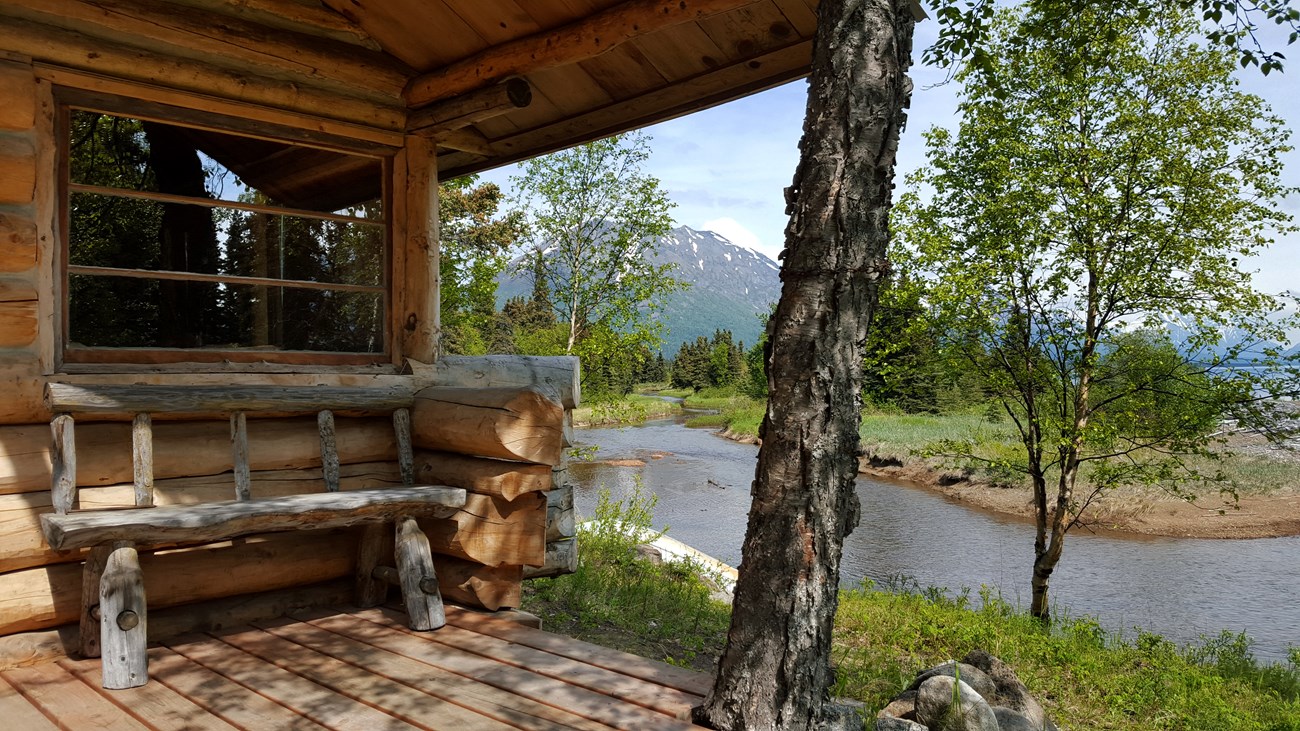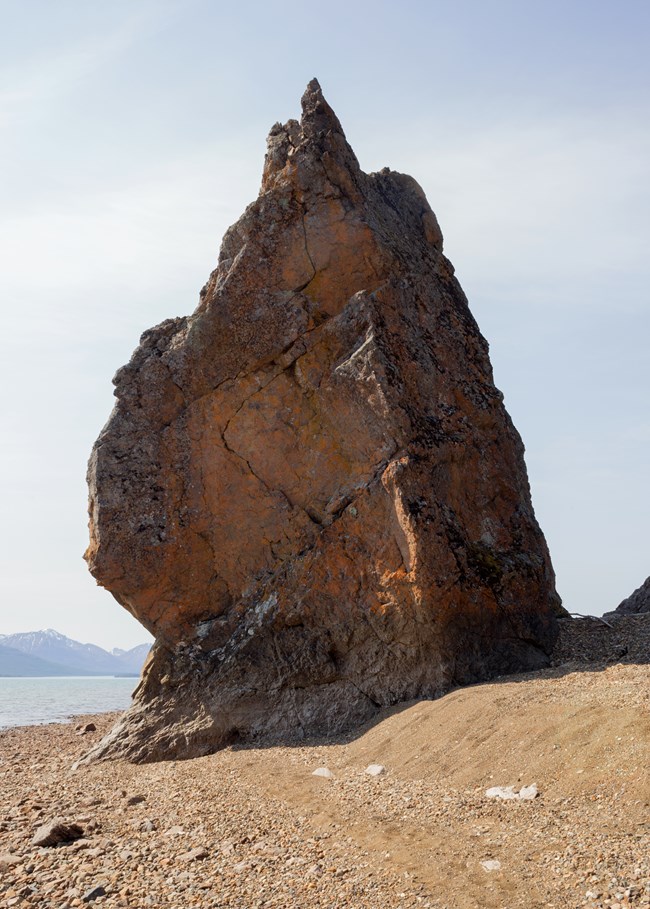
NPS/T.Vaughn 'The Rock That Stands Alone'Priest Rock is a thirty-five foot tall monolith rising along the lakeshore of Lake Clark and has long been an important landmark in the region. The Dena’ina people refer to this rock as Hnitsanghi’iy, 'the rock that stands alone.' There are various traditional stories relating to it, including a time when a rope was tied around the rock to try and unsuccessfully pull it down.The name Priest Rock was first documented in 1902 by biologist Martin Gormin during the first U.S. Government exploration of the Lake Clark area. The Russian Orthodox religion had been in Alaska since 1794 and one can imagine how from a distance the rock could resemble the hat of a Russian Orthodox priest. Mountains with Meanings 

Left image
Right image
In Search of SolitudeFollowing the Second World War, advances in aviation technology and wartime infrastructure made the wilderness areas around Lake Clark more accessible than before. After the first airstrips in the region were built, individauls with the means to do so were able to access some of the wildest places in the region.These new arrivals were not the first European-Americans to move to the area. Others seeking fortune had to come before them. What generally sets these postwar settlers apart from other European-Americans who had come to Lake Clark earlier is their view towards wilderness conservation. They felt that the remote Lake Clark setting served as a sanctuary. Among these new settlers were Allen Woodward, who built the Priest Rock cabin, Richard Proenneke, who would garner fame for his cabin at Twin Lakes, and former Governor of Alaska, Jay Hammond. Proenneke, Hammond, and Woodward are representative the post World War II veterans who were pilots and early settlers in the Lake Clark country. Aviation allowed them to see Lake Clark for the first time and afterwards enabled them to own property there and to access their cabins. This group of settlers to the Lake Clark area was unique not only because they sought solitude over profit, but also because they later fought to see that the broader public had the same opportunities. All strong supporters of a national park in the area, and public access. 
NPS/R.Jones The Cabin at Priest RockThe Priest Rock Cabin was originally built and lived in by long-time Alaskan Allen Woodward of Anchorage who was a summer resident of Lake Clark from about 1950 to the early 2000s. Allen Woodward is a veteran naval aviator from the Pacific Theater during World War II. After serving in the war, Woodward settled in Alaska and worked for the Civil Aeronautic Administration, the forerunner of the FAA. As a pilot, he often flew government personnel to remote sites throughout the state. Having his own personal airplane gave Woodward freedom to reach the inaccessible areas of Alaska.In 1949, Woodward staked the five acre site on the shore of Lake Clark. After his original cabin suffered severe damage during flooding in 1971, Woodward built a new cabin that was finished in 1978 after several years of construction. The wood he used for the walls were locally cut white spruce harvested upstream from the construction site. The logs were cut, floated into the river, and towed with rope downstream toward the cabin. Once placed, the logs were chinked with cement to fill in gaps between the wood. Woodward used his plane to import boards for the roof on trips from Anchorage, carrying six to eight at a time. In 1979, Woodward sold the first of his three cabins on Lake Clark to the National Park Foundation to become the office for the new Lake Clark National Monument, even before it was designated as a National Park in 1980. This cabin is now on the National Register of Historic Places. 
NPS/T.Vaughn In 2000, Allen and Marian Woodward donated a rare and largely intact Bristol Bay "double ender" wooden sailboat that was in use in the commercial salmon fishery, c. 1916 to 1950. The "double-ender" wooden sailboat is now restored and on display at the park’s visitor center in Port Alsworth. In 2006, after nearly fifty summers spent in this cabin, Allen Woodward sold it to The Conservation Fund with the intention that it eventually would be donated to the National Park Service. Woodward sold the cabin at its appraised value after declining multiple other offers because he specifically wished to see it become part of the national park and preserve. Finally, after a decade of restoration, this cabin opened for public use in the summer of 2017. The post- World War Two generations of Allen Woodward, Jay Hammond and Richard Proenneke were first attracted to this area by the wilderness. They were drawn by the solitude and independence this area afforded, but they also believed that the beauty of Lake Clark should be protected so that it could be enjoyed by all. Spend the NightReserve Priest Rock Public Use Cabin |
Last updated: March 28, 2019
